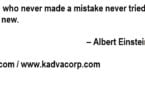A holistic retirement is attainable with sound financial planning and retirement planning. Read to learn more about the essential tips to start your journey towards retirement.

What is retirement?
Retirement is when one chooses to leave their work life forever. Usually, this is a consequence of old age or sickness. Some may stop when they are eligible for private or public pensions.
Planning for retirement happens over decades of working, earning and saving. Retirement planning begins when you look at your financial goals and the money you need to fund your future after retirement.
Retirement and retirement planning haven’t changed much on the surface. You save in periodic amounts over the time you’re employed and earning. To retire comfortably and have a secure financial safety net, you need to plan well in advance for it by assessing your retirement goals.
What is Retirement Planning?
Retirement planning is preparing for life after the employment period in life, where one is earning. Planning for retirement involves considering a holistic perspective of financial and non-financial lifestyle choices. It is necessary to consider all areas of life to have a fulfilling retirement without any hiccups.
You can have the retirement you’ve always wanted by planning well in advance for it. Retirement planning will allow you to conquer all the experiences you couldn’t have lived through while you were too busy working. Vacations, running for your marathon and spending quality time with your family are all possibilities during your retirement.
Prioritization towards retirement planning changes over different life stages. At the beginning of your career, retirement planning involves setting aside enough money for retirement. Over time, this focus may shift to changing income and asset targets as other financial goals are fulfilled. The savings you accumulate over your working life will pay off after retirement.
Importance of Financial Planning for Retirement
Retirement planning involves a focus on achieving personal and financial goals. Personal goals are tied to the satisfaction one derives from their retirement. Financial goals allow for budgeting income and expenses based on personal goals.
On the other hand, financial planning helps in budgeting income and expenses based on the personal plan. It is essential to understand how one would want to spend their life in retirement to plan well for it. Financial planning from an early age will help establish a retirement fund.
Here are some reasons why retirement planning is essential:
- One cannot work forever. At a certain point, sickness and ailments occur with old age. Medical emergencies may also be a cause for concern.
- The average life expectancy is increasing. While planning for your retirement, you may have to develop a plan that considers expenses until your 90s!
- Retirement is your time to catch up on experiences you may have missed while you were busy working. It is the right time to conquer any aspirations you have.
- Retirement allows you to be self-sufficient in the latter phase of your life. You would not depend on family, friends or your children to meet your needs. Planning can help you support your family even after you have retired.
- It is risky to rely on one source of income after you retire, for example, a pension. Thus, it is imperative to plan from the beginning of your career.
Thus, to experience a retirement without compromises, one must start planning and investing well in advance.
Tips to build a retirement plan
One must start retirement planning from the early stages of their career. Accumulating a sustainable corpus helps reduce the pressure to save for retirement in the latter stages of one’s career. Most individuals postpone planning for retirement and focus on other financial and life goals. Taking small steps, in the beginning, can reduce the burden one may face later in life.
Follow these steps to plan for retirement:
1. Decide on your retirement age
To determine your retirement plan in a holistic sense, you must decide on the age at which you want to retire. Work backwards and calculate the time you have left for retirement to plan your expenses. For example, at 25, if you decide you want to retire at 65, you must account for expenses for at least 20 years after 65. The investment horizon is 40 years in this case. You must ensure that your current investment and saving strategies should sustain you until you’re 85 years old.
2. Create an estimate for your expenses
Create a budget for your current expenses while recalibrating these expenses you may have to make after retirement. Ensure you have a contingency fund as you may incur medical bills due to old age. Landing on the exact amount can be challenging, but it is essential to create an estimate and save accordingly.
3. Avoid dipping into your retirement funds
Leave your retirement funds undisturbed. Refrain from using the retirement fund for other financial goals such as education. Plan other financial goals and allocate money in a way where every goal has a specific corpus.
4. Allocate investments across assets
It is essential to diversify your investments and beat the threat of inflation. Invest in assets that offer inflation-beating returns. Be sure to consider assets that compound over a period with sound medical and life insurance plans. As you dip into your saved funds during retirement, you should consider tax planning in this area.
Types of retirement plans
Irrespective of your type of employment, there are various pension schemes in the market to help you plan for retirement.
Contributory Pension Scheme
This scheme works for private and public sector employees. You can open a Retirement Savings Account (RSA) that allows monthly contributions from your employer. The contribution amount is ~20% of your salary.
Voluntary Contribution Scheme
The Voluntary Contribution Scheme is an additional contribution plan to your current contribution scheme. You can make contributions on a weekly, quarterly or monthly basis. You can opt-in for this by notifying your employer.
Cross-Border Pension Scheme
If you are outside the country, the cross-border pension scheme can enable you to contribute to your pension fund. Your RSA is denoted in Naira.
Retirement Plan
This plan is for risk-averse retirees. In this case, your funds are invested in low-risk financial instruments like bonds. You can access this plan if you are 50 years of age or older.
How much money is needed to retire at age 60?
Accumulate a percentage of your salary before your retirement. As a rule of thumb, saving 15% of your salary in your 20s through your employed years in savings accounts, retirement accounts and employer contributions should prepare you for retirement.
You should have saved 8x of your annual salary to sustain your retirement until age 60. Financial planning for retirement along with wealth management is crucial to ensure you achieve this number at the right time.
6 Ways to invest for retirement
REITs
Real Estate Investment Trusts or REITs are suitable for those who have already retired. REITs are a source of investment for individuals who want monthly dividends. This asset class is highly liquid and allows investors to invest in non-residential investments like office buildings or malls.
REITs are governed by The Securities and Exchange Commission (SEC). The SEC pools capital to acquire real estate, mortgage loans or both. REITs are suitable for investors who want exposure to real estate without direct investment.
Stocks for growth
Equity listed on the Stock Exchange consists of individual stocks or shares available for retail investors. If you buy shares, you own a portion of a company. The valuation of shares changes based on market factors, a company’s performance and other variables. Consider dividend-paying stocks if you want to minimize risk.
Bonds
Bonds are a fixed-income tool that represents loans between a corporate body or the government and a lender. Bonds are used by companies, governments, states and even municipalities. Bond owners are creditors of the issuer.
A bond includes the principal loan amount and repayment date along with variable or fixed interest payments by the borrower. Bonds are not as volatile as stocks and should be used to diversify your portfolio. Bonds are suitable for investors who seek additional income while preserving their principal amount.
Mutual funds
An easy way to invest in the market while avoiding risk would be through mutual funds. Mutual funds are collective investment assets where a fund manager pools funds from different individuals and institutions to invest them in different stocks or companies. Usually, an investment management company with a license from the SEC provides these services. Mutual funds can be open-ended or close-ended. In open-ended funds, there is no limit to the units being issued and are redeemed or created as required. The fund manager issues units based on the NAV or Net Asset Value. With closed mutual funds, there is a limit to the amount available. This is offered in an IPO and is traded in the market like regular stocks.
Annuity from Insurance
The term annuity refers to the monthly or annual payments you receive from your insurance provider after you have made a lump-sum payment or sequence of payments to your provider. It is important to know that there are different types of annuities. The most suitable type for you will depend on your risk appetite and the age at which you would begin receiving annuity income.
Conclusion
There are several benefits to planning for your retirement, as you may have concluded already. In the event that you plan ahead as much as you can, you will be on your way to a more holistic retirement. In order to determine what is the best retirement plan for you, you may wish to consult with a financial advisor.
Starting early has several benefits, especially when it comes to retirement. You can provide financial cushioning for retirement by diversifying your investment portfolio, accumulating adequate insurance, and generating passive income from multiple sources. Retirement. Planning for retirement should be an essential financial goal in everyone’s personal finance strategy.
FAQs
What is the 4% rule in retirement planning?
The Four Percent Rule is the percentage a retiree should ideally withdraw from their retirement account every year. This should serve as a benchmark to provide individuals with a steady line of income for expenses while the balance may be invested in risk-averse options to allow for growth. The longer an individual lives, the longer their investments would have to sustain them. The 4% withdrawal rate is well tested, even in the event of unforeseen medical circumstances in life.
What should I be doing five years before retirement?
Five years before retiring, you should be saving up as much as possible to enjoy your golden years. Consider your retirement budget, build up comprehensive health coverage and ensure you have enough funds to cover your desired lifestyle choices during retirement.
What is the most critical factor in retirement planning?
Planning well in advance, starting small and taking action early are key factors in retirement planning. Starting late can build a financial burden with pressure in the latter half of your career. It is essential to plan for your retirement from the time you begin earning.
What is considered a comfortable monthly retirement income?
A monthly retirement income should cover all your costs and lifestyle expenses while factoring in inflation. Count backwards to understand the amount you would have to put aside for a comfortable monthly retirement income. Depending on what type of retirement you are planning for, you may wish to consult a financial advisor in order to determine an estimate of a good monthly retirement income for you.







Leave a Comment
You must be logged in to post a comment.